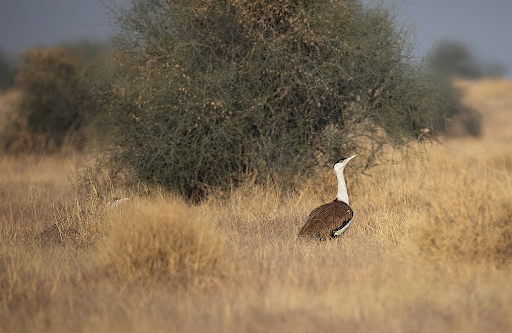




Source: LIVEMINT
Disclaimer: Copyright infringement not intended.
Recently scientists have described a new extinct species named Mosura fentoni an early marine predator that lived around 506 million years ago during the Cambrian period.
This discovery from the Burgess Shale formation of the Canadian Rockies offers a rare window into the early evolution of arthropods a diverse phylum that includes insects, crustaceans and arachnids.
|
Feature |
Details |
|
Taxonomic Group |
Radiodonta (extinct stem-group arthropods) Radiodonts are stem-group arthropods meaning they are not direct ancestors of modern arthropods but share a common evolutionary lineage. Mosura fentoni shows evolutionary traits that bridge ancient radiodonts and modern arthropods like insects and horseshoe crabs. |
|
Time Period |
Cambrian Period (~506 million years ago) |
|
Discovery Site |
Burgess Shale, Canadian Rockies (British Columbia, Canada) |
|
Size |
Roughly as long as a human index finger |
|
Notable Feature |
Three eyes: 2 lateral + 1 large median (central) eye |
Three Eyes
Two lateral eyes for peripheral vision.
One large central eye possibly for enhanced depth perception and prey tracking.
Reflects advanced visual processing for its time.
Elongated, Trunk-like Body
Equipped with lateral swimming flaps enabling it to swim like modern rays.
Indicates agile movement and effective predation strategies.
Segmented Abdomen-Like Region
16 tightly packed body segments in the rear.
Each segment lined with external gills enhancing respiratory efficiency.
Gills at the Posterior End
Unique breathing mechanism among radiodonts.
Represents evolutionary experimentation and a potential early form of convergent evolution with modern arthropods.
Named after Mothra the iconic moth kaiju (monster) from Japanese films due to its hovering appearance and body structure.
Honors David Fenton the fossil preparator who contributed significantly to the discovery.
Sources:
|
PRACTICE QUESTION Q. Recently discovered fossil species Mosura fentoni is significant because: A) It represents the earliest known vertebrate Answer: B Conclusion The discovery of Mosura fentoni enriches the fossil record of early arthropods showcasing how evolutionary innovation shaped the diversity of life on Earth. Its unique anatomy three eyes, lateral swimming flaps and posterior gills provides a crucial link in understanding how modern arthropods might have evolved from their ancient ancestors. |






© 2026 iasgyan. All right reserved